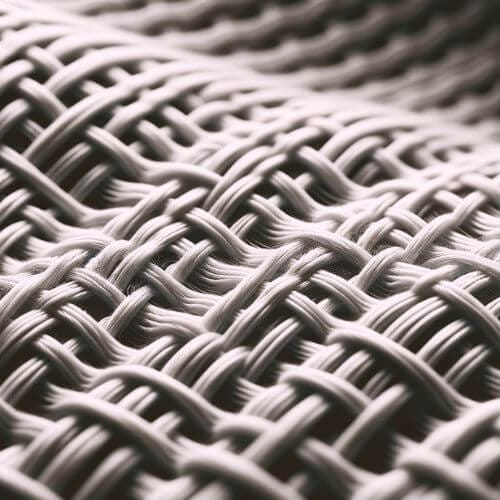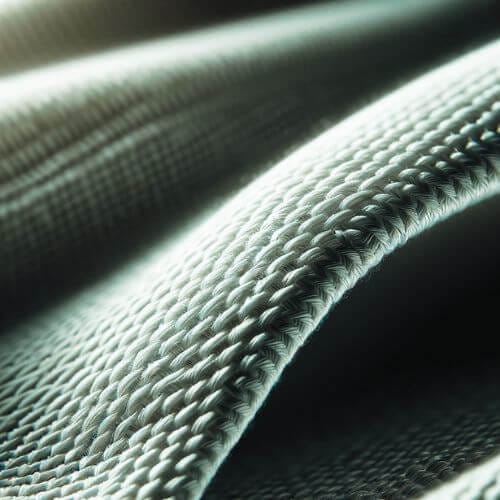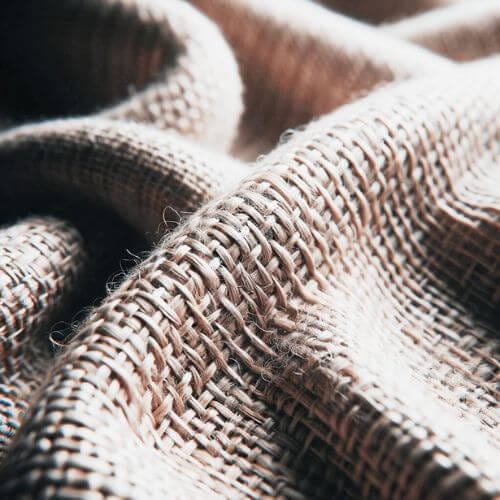In the quest for the perfect night's sleep, bed sheets play a crucial role. Among the many factors to consider, thread count often emerges as a primary concern for shoppers.
I've often puzzled over the many types of sheets available with different thread counts. Is this one more comfortable? Does that one wrinkle a lot in the dryer? Does this one sleep "hot"? Goodness, the choices!
However, in my research, I found that the significance of thread count in determining sheet quality is shrouded in myths and misconceptions.
So I set about learning all I could about thread count and wanted to share my research with you.
This comprehensive guide aims to unravel these mysteries, offering insights into what truly makes for a comfortable, durable bed sheet.
Key Takeaways:
- Thread count refers to the number of threads woven into one square inch of fabric.
- The ideal thread count for sheets varies depending on the material but typically ranges between 200 and 600.
- Higher thread counts can sometimes lead to heavier sheets, which may not necessarily mean better quality.
Table of Contents
-Understanding Thread Count and the Truth Behind High Thread Counts
-Ideal Thread Count for Different Materials
-Thread Count and Fabric Strength
-The Best Thread Count for Comfort
-Thread Count and Price
-How to Choose the Right Thread Count
-The Environmental Impact of Thread Count
-Summary
-Frequently Asked Questions
Understanding Thread Count and the Truth Behind High Thread Counts
Thread count refers to the number of threads woven into one square inch of fabric. It includes both the vertical (warp) and horizontal (weft) weave. It's a measure of the fabric's density.
The Warp and Weft of It All!
However, contrary to popular belief, a higher thread count doesn't always equate to higher quality. The type of thread and the weave pattern play a significant role in the overall feel and durability of the sheets.
The Truth Behind High Thread Counts
Some manufacturers use creative math to inflate the thread count by counting not just fewer threads within each thread, but each fiber (or ply) within the thread.
This can lead to misleadingly high thread counts without necessarily improving the fabric's feel or longevity. It's important to be aware of these tactics when shopping for high-quality sheets.
The Misconception of Thread Count
It's a common belief that higher thread count sheets are always better. However, after a certain point, a higher thread count can lead to sheets that are unnecessarily heavy and less breathable.
It's crucial to consider the quality of the material and the weave alongside the high thread count sheets too.
Thread Count Myths Debunked
The Highest Thread Count Is the Best: This is not necessarily true. The best thread count for sheets balances comfort, durability, and breathability.
Thread Count Is the Only Indicator of Quality: Thread count is just one factor in sheet quality. The type of cotton, weave, and finish are equally important.
Ideal Thread Count for Different Materials
Each material has its own "sweet Spot" when it comes to thread count:
- Cotton: A staple in the bedding industry, cotton sheets with a thread count of 200-400 are often ideal. This range provides a good balance of softness, durability, and breathability.
Higher thread counts in cotton can lead to a heavier sheet, which might not be suitable for all climates or preferences.

Here is the image showing a close-up view of the weave of a regular cotton sheet. This image highlights the detailed texture and interlacing of threads in the fabric, showcasing the quality and density of the weave.
- Egyptian Cotton: Known for its long fibers, Egyptian cotton sheets are prized for their softness and durability. Egyptian and Pima cotton are known for their long fibers, which allow for a softer and more durable sheet.

Here is the image depicting a close-up view of the weave of an Egyptian cotton sheet. This visual emphasizes the fine texture and luxurious quality of Egyptian cotton.
- Sateen: This weave, known for its luster and drape, works well with thread counts from 300-600. It creates a silky feel without being overly dense. But higher thread counts can make the fabric less durable.
Sateen weave sheets have a lustrous surface and are heavier than percale sheets. A thread count of 300-600 is suitable for sateen sheets, providing a luxurious feel without being overly dense, but higher thread counts can make the fabric less durable.

Here is the image showing a close-up view of a sateen weave sheet. This image captures the smooth and glossy texture that is characteristic of the sateen weave style.

Here is the image featuring a close-up view of a sateen weave fabric. This visual highlights the detailed weave pattern, showcasing the dense and tight weave that gives sateen its distinctive glossy surface and luxurious texture.
- Percale: Known for its crisp and cool feel, percale sheets are best with a thread count of 200-400. This range ensures the sheets are soft yet give a balance of strength and breathability.
It is durable and tends to get better with each wash. This is my favorite pick of all!

Here is the image displaying a close-up view of a percale weave fabric. The image emphasizes the tight and uniform weave pattern, showcasing the matte finish and crisp texture that are characteristic of percale
- Linen Sheets: Linen sheets do not follow the same thread count guidelines as cotton. Linen is measured in grams per square meter (GSM). A good quality linen sheet typically has a GSM of 150-250.

Here is the image depicting a close-up view of a linen sheet weave. This visual highlights the natural and slightly irregular weave pattern, capturing the unique texture and rustic quality of linen fabric.
Remember, in some cases, a higher thread count can enhance the feel of the sheet. For example, with sateen weaves, a higher thread count can contribute to the silky texture.
However, once you exceed a thread count of 600, you're likely to see diminishing returns on your investment in warp threads.
Thread Count and Fabric Strength
Does Higher Thread Count Mean More Durability? A moderate thread count often indicates a stronger fabric because there's enough room for the threads to be more tightly woven without overcrowding.
Extremely high thread counts can result in a dense weave that is prone to wear and tear.
The Balance Between Thread Count and Durability: Finding the right balance between thread count and durability is key. A thread count that is too low may lead to a rougher texture and less durability, while an excessively high thread count can weaken the fabric.
The Best Thread Count for Comfort
Softness and Thread Count: The softness of bed sheets also is influenced by thread count, but it's not the sole factor. The quality of the cotton and the finishing processes also play a significant role in the final texture of the bed linens.
Comfort is subjective and varies depending on personal preferences and sleeping habits. In general, a thread count in the range of 300-500 is comfortable for most types of materials. This range provides a smooth, soft feel without compromising on breathability.
Breathability and Thread Count: Breathability is crucial for a comfortable night's sleep. A thread count that is too high can restrict airflow, making sheets feel stuffy. A thread count in the mid-range promotes better air circulation.
Thread Count and Price
Is Higher Thread Count More Expensive? Thread count affects price, but not always in a straightforward manner. While higher thread counts typically command higher prices, it's important to consider whether the increase in price is justified by the quality.
In some cases, you might be paying more for a high thread count that doesn't necessarily translate to better quality or comfort. This is where consumer reviews will come in handy.
Generally, sheets with a higher thread count are more expensive due to the perception of higher quality. However, price should not be the only consideration when determining the best thread count for sheets.
Cost-Effectiveness and Thread Count: The best value comes from finding high-quality sheets with a reasonable thread count that meets your comfort preferences without breaking the bank. You can expect to pay anywhere between $50 - $200 for a good set of sheets.
How to Choose the Right Thread Count
Assessing Your Preferences: Consider your personal preferences for texture and warmth when selecting a thread count. Some people prefer the crispness of a lower thread count percale, while others may favor the smoothness of a higher thread count sateen.
Reading the Label Carefully: Choosing the right thread count involves considering your personal comfort preferences, the climate you live in, and the material of the sheets.
For example, if you live in a warmer climate, you might prefer lower thread counts (200-300) which offer more breathability. It's also essential to consider the weave and the quality of the fibers used in the sheets.
Always read the label when buying bed sheets to understand the true thread count and the materials used. Look for reputable brands that provide transparent information about their bed linens.
Additional Labels to Understand on Bed Sheets
Besides the TC (Thread Count) label, here are a few others to check out:
Brand Label: As the name implies, this label identifies the brand or manufacturer of the bed sheets, providing insight into the company responsible for their production.
Care Instruction Label: This label offers essential guidelines on how to wash, dry, and iron the sheets properly, ensuring their longevity and preserving their quality.
Size Label: This label provides information about the bed sheet's dimensions, specifying whether it's designed for Twin, Full, Queen, King sizes, or detailing its exact measurements in terms of width and length.
Certification Labels: Labels such as OEKO-TEX® or the Global Organic Textile Standard (GOTS) signify that the bed sheets comply with specific standards regarding quality, safety, and eco-friendliness, assuring consumers of their adherence to these important criteria.
The Environmental Impact of Thread Count
Sustainable Practices and Thread Count - The production of higher thread count sheets can have a more significant environmental impact, as they require more cotton or other materials.
Opting for sheets made from organic cotton or other sustainable materials can help mitigate this impact. Additionally, choosing higher-quality sheets that last longer can reduce the frequency of replacement, further lessening the environmental footprint.
Eco-Friendly Sheet Options - Look for brands that prioritize eco-friendly practices and materials, regardless of thread count, to ensure a responsible choice for your bedding.
Summary

In conclusion, the best thread count for sheets is not a one-size-fits-all answer. It depends on the material, weave, and personal comfort preferences.
A range of 200-600 is generally recommended, with 200-400 being ideal for cotton and 300-600 for sateen weaves. It's important to consider the quality of the material and the integrity of the brand over the thread count alone.
Remember, the highest thread count doesn't always mean the best quality; sometimes, it's more about marketing than material excellence.
By the way, we just wrote a product review on bamboo bed sheets as well as a guide to the benefits of bamboo sheets. These amazing sheets are trending right now, and you may be interested in checking out our findings.
FAQ Section

Does a higher thread count guarantee better quality sheets?
No, a higher thread count does not automatically guarantee better quality. The type of cotton, weave, and finishing processes are also important factors in determining the quality of sheets.
Can thread count affect the breathability of sheets?
Yes, a very high thread count can reduce the breathability of sheets, making them feel warmer and less comfortable during sleep.
Is it worth paying more for sheets with a higher thread count?
Not necessarily. It's more important to find sheets with a good thread count, that provides the comfort and durability you prefer, rather than focusing solely on a higher thread count. Quality materials and weave are also crucial considerations.
Is Egyptian cotton better than regular cotton?
Egyptian cotton is prized for its long fibers, which create softer and more durable sheets. However, the best choice depends on personal preferences and budget.
Can high thread count sheets be cooler?
Not necessarily. Higher thread counts can lead to denser, less breathable sheets, which might not be ideal for hot sleepers.
How often should sheets be replaced?
This depends on the quality of the sheets and how well they are cared for. Generally, good quality sheets can last several years.
Are there eco-friendly high thread count options?
Yes, there are high thread count sheets made from organic and sustainably sourced materials.
Do I need different thread count sheets for different seasons?
It can be beneficial. Lower thread counts are more breathable for summer, while higher thread counts offer more warmth for winter.
Thanks for stopping by our bee hive and reading up on bedsheets and their thread count! We'll be reviewing some specific bedsheets that we consider the best that are on Amazon in a future article so stay tuned to our beehive!
And check out our featured article all about Bertie's Buzz!

Bertie
Before you leave, if you haven't already done so, please subscribe so you will be the first to see reviews you can rely on.










Member discussion